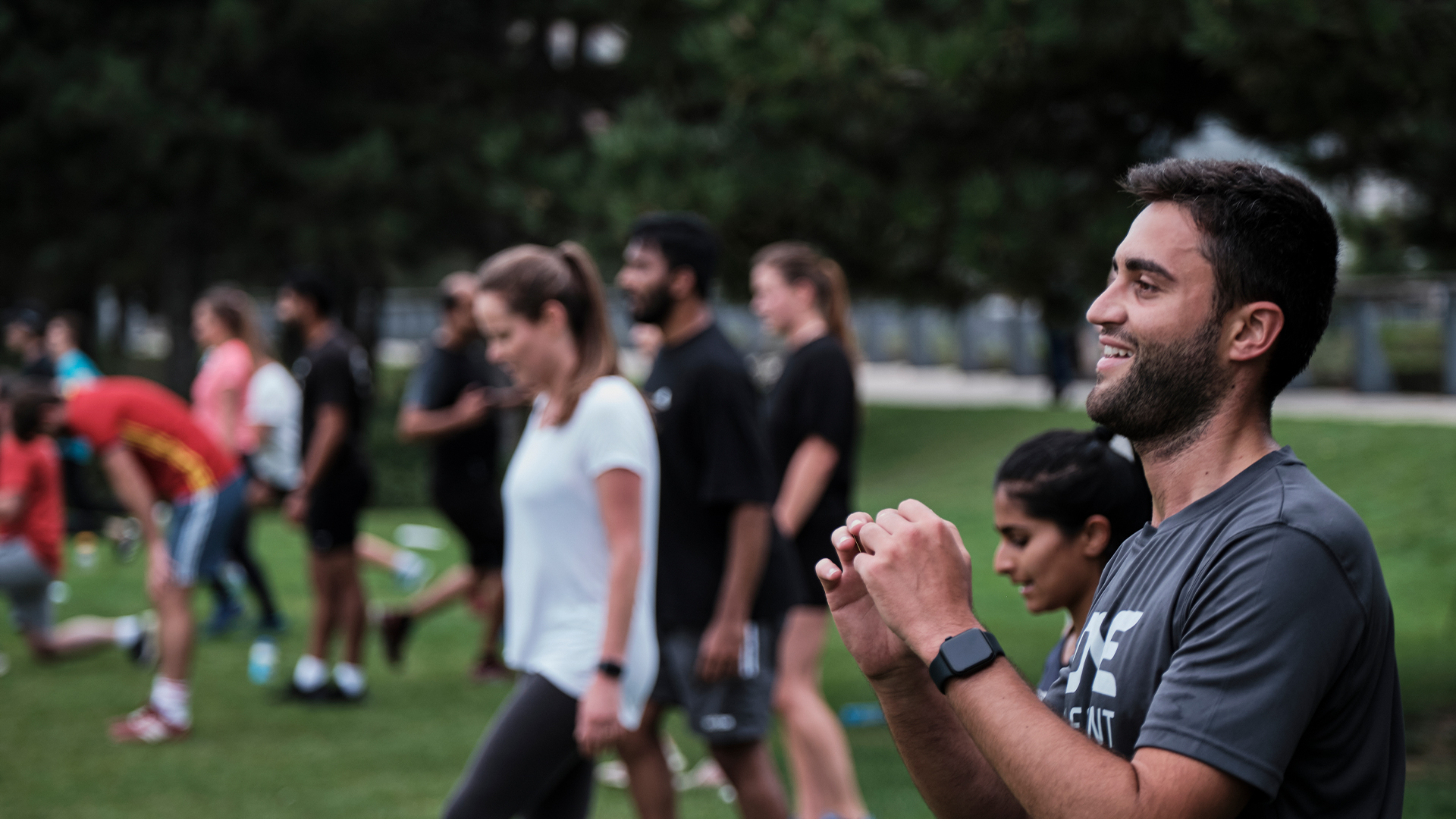The Power of the Social Gene: Fostering Connection through Group Exercise and Outdoor Fitness
In the intricate world of human evolution, the interaction between individual survival and societal connection is a captivating narrative. I read a book a few weeks ago called “Why we sleep” by Mathew Walker and something leapt out at me – apparently, we have evolved as individuals to wake up and go to sleep at different times, not for our own benefit but for the benefit of the tribe. I wondered if other human traits had evolved for the benefit of the group and not just the individual. It turns out, this is a new area of evolutionary thought. Let’s have a look at how this affects our ability to foster connection through group exercise:
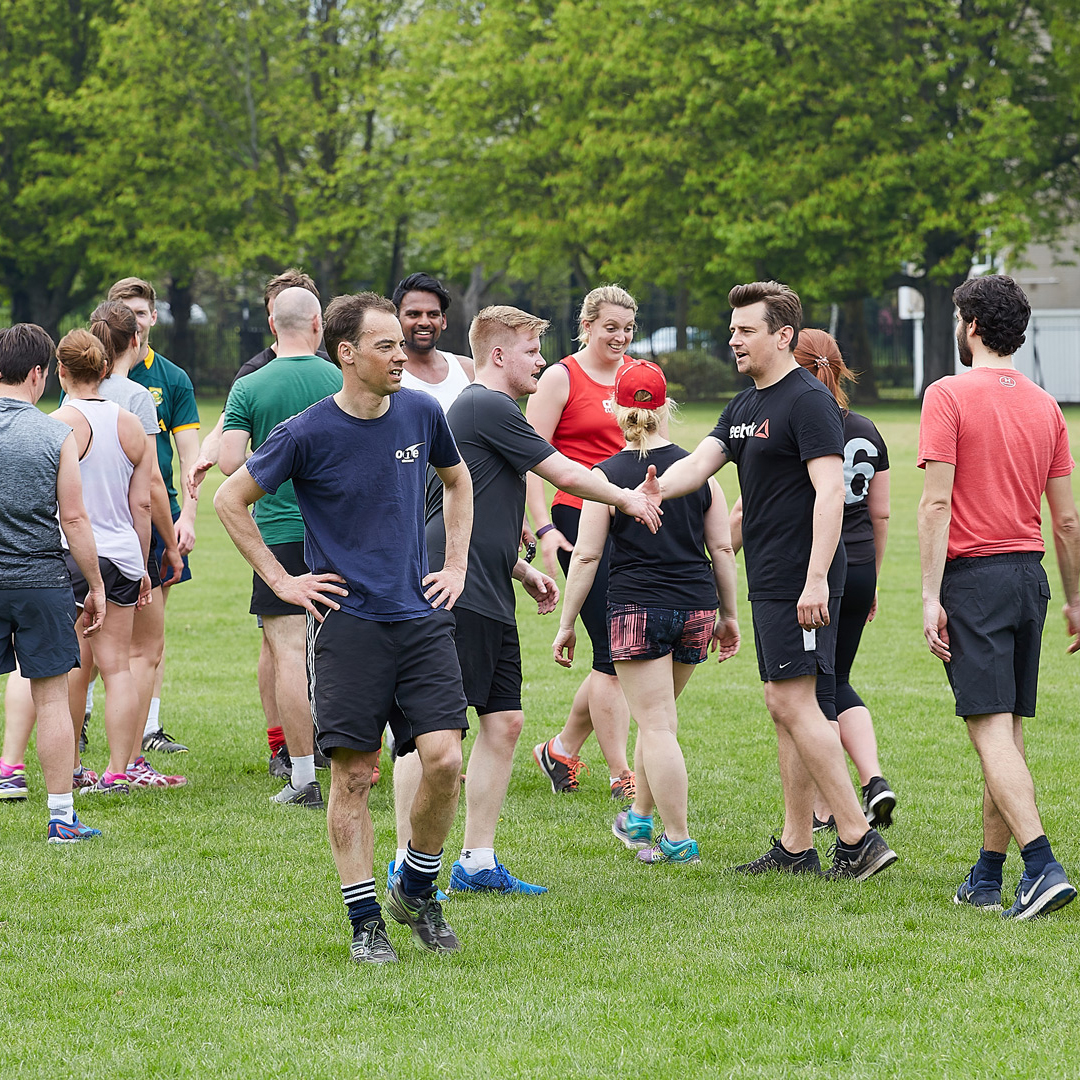
Beyond Self-Centred Evolution
Richard Dawkins’ concept of the ‘selfish gene’ suggests that evolution is driven primarily by the survival and replication of individual genes. This leads to behaviours that maximise personal reproductive success. However, a growing body of research suggests that cooperation in society has played a pivotal role in shaping human evolution.
Why Behavioural Traits May Have Evolved in a Group
The evolution of anxiety within individuals and the emergence of distinct traits like exploration and extroversion within groups are not a coincidence. They are adaptations made by the forces of natural selection. These behaviours serve a purpose that benefits the group.
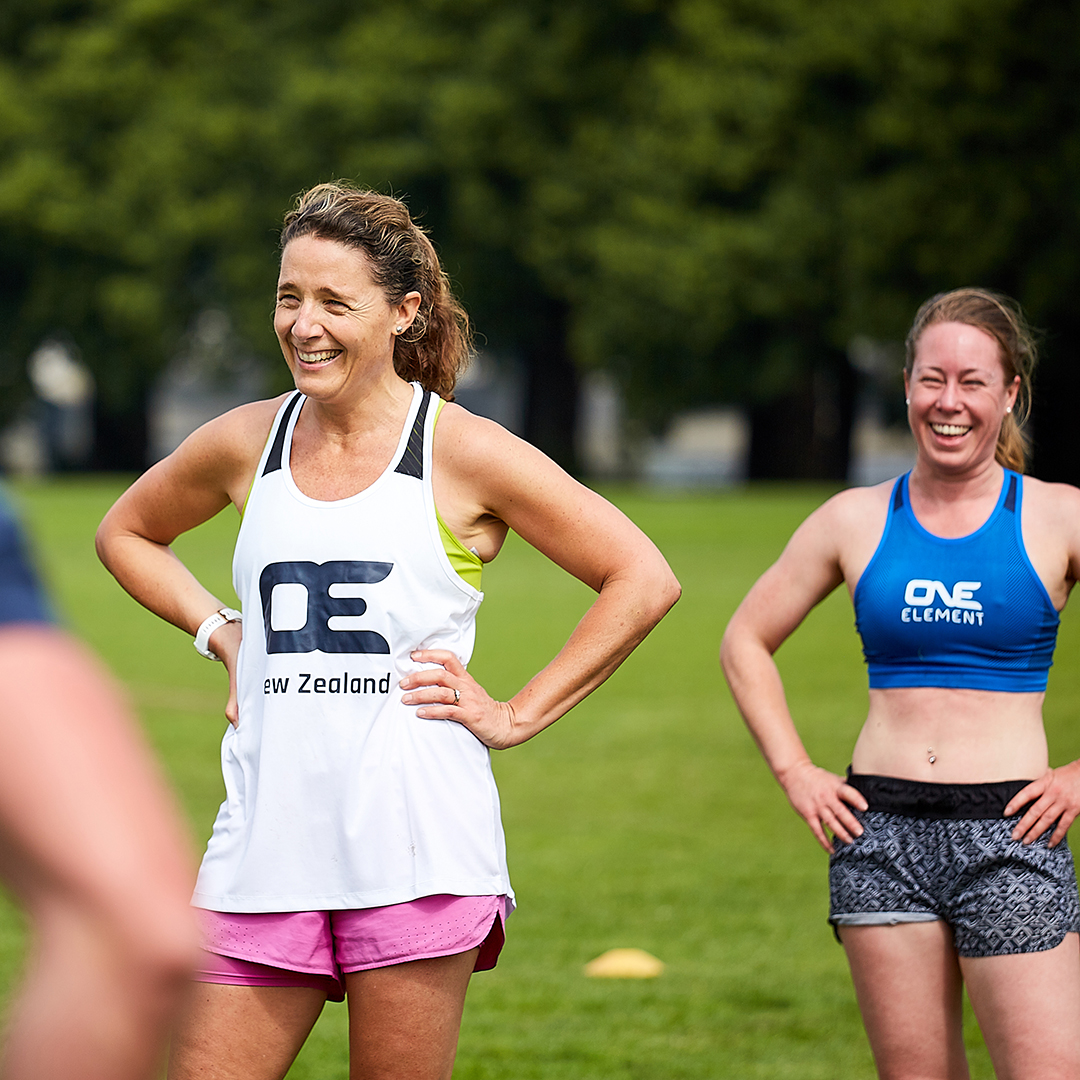
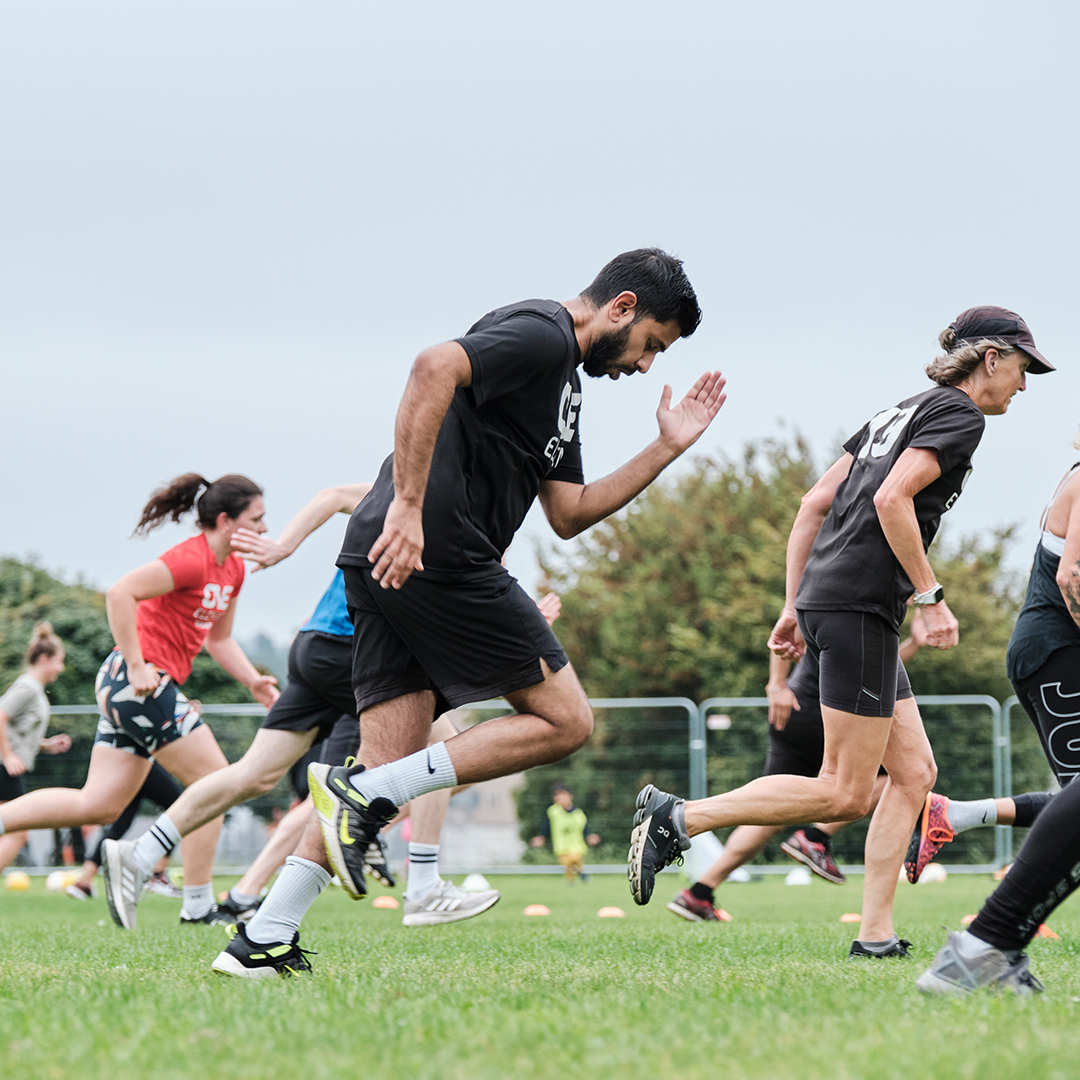
Anxiety’s Protective Role: Anxiety, often perceived as a negative trait, holds well established evolutionary significance. Those exhibiting anxiety tend to be more cautious, vigilant, and attuned to potential threats in their environment. This awareness stems from our primal instinct to ensure survival by identifying and responding to dangers. In ancestral times, those who displayed anxiety were more likely to escape harm, pass on their genes, and pass on this trait. The presence of anxious individuals in a group helped warn the group of potential dangers and improved group survival.
Exploration and Extroversion: On the other end of the behavioural spectrum are traits like exploration and extroversion. These characteristics play a vital role in expanding the group’s adaptive potential. Exploratory behaviour involves venturing into new environments, seeking resources, and discovering opportunities. Extroverted individuals are socially outgoing, initiating interactions and forging new relationships. The presence of individuals who explore brought valuable resources and information back to the group including diverse food sources, the spread of innovations, and the alliances for mutual benefit.
The interaction of anxiety and traits like exploration and extroversion presents a fascinating dynamic. Anxious individuals maintain a secure environment, while exploratory and extroverted members enable the group to adapt, thrive, and navigate complex challenges. This relationship highlights the cooperative nature of human evolution, where contradictory traits collaborate to create a resilient and dynamic group structure. We can draw upon this relationship when fostering connections through group exercise.
How does this foster connection through group exercise?
Today, these traits can be perceived differently. Anxiety, once crucial for detecting threats, can become overwhelming in a world filled with constant stimuli and stressors. In modern contexts, individuals may find anxiety to be a burden, affecting mental health and wellbeing.
Exploration and extroversion might now present challenges in a society that values conformity and stability. These traits are shouldered by the individual not the group and the late sleeper, once valuable to the survival of the group, can now be seen as lazy as they like to sleep later.
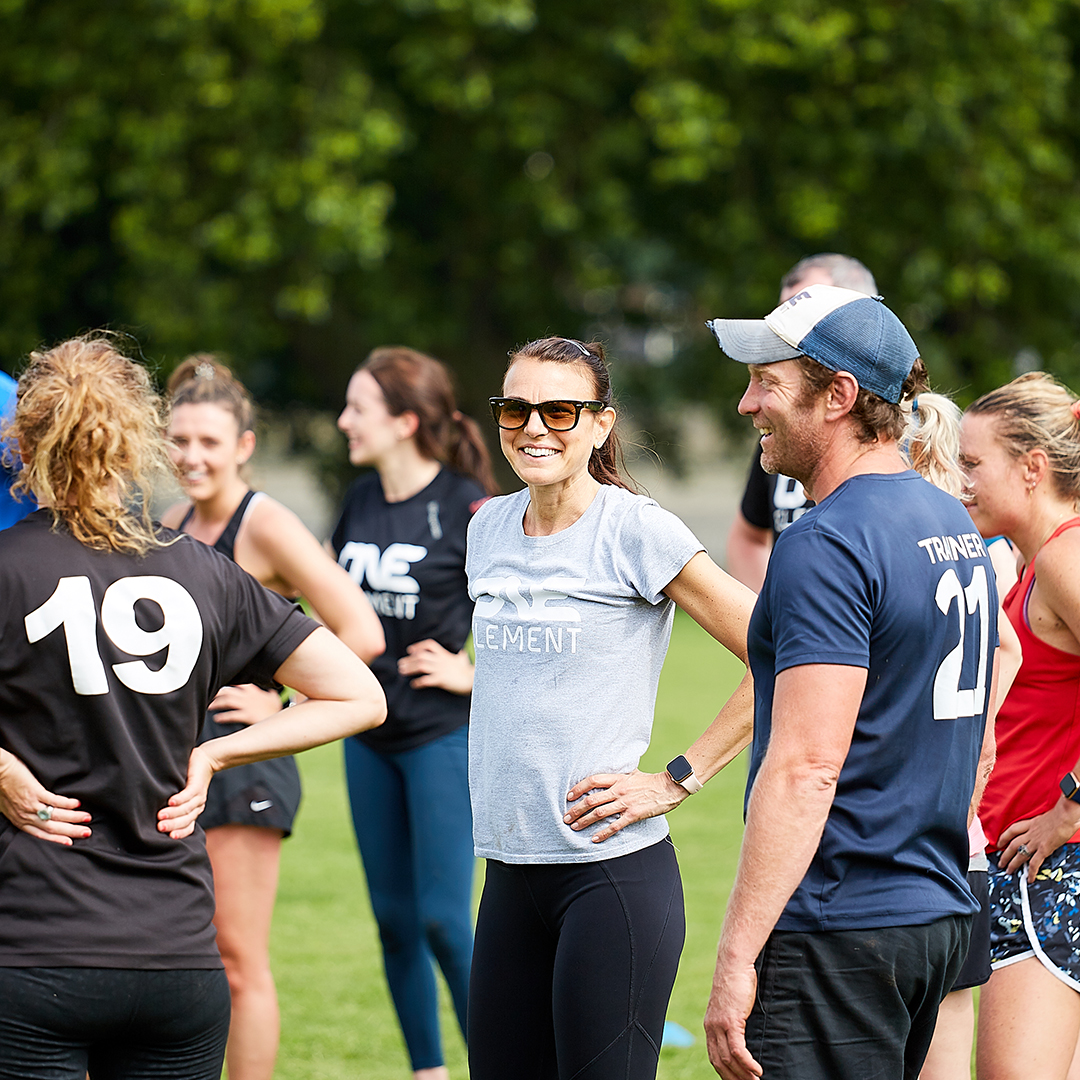
It’s important to recognise that the relationship between individual behaviours and group dynamics is not static. While traits like anxiety, exploration, and extroversion were once advantageous for the group’s survival, they may be experienced differently by individuals today. By understanding the origins of these traits and their shifting relevance, we can become more compassionate on the complexities of human behaviour and its evolution. Using One Element’s outdoor group fitness as an example, it is a great way of fostering connection through group exercise.
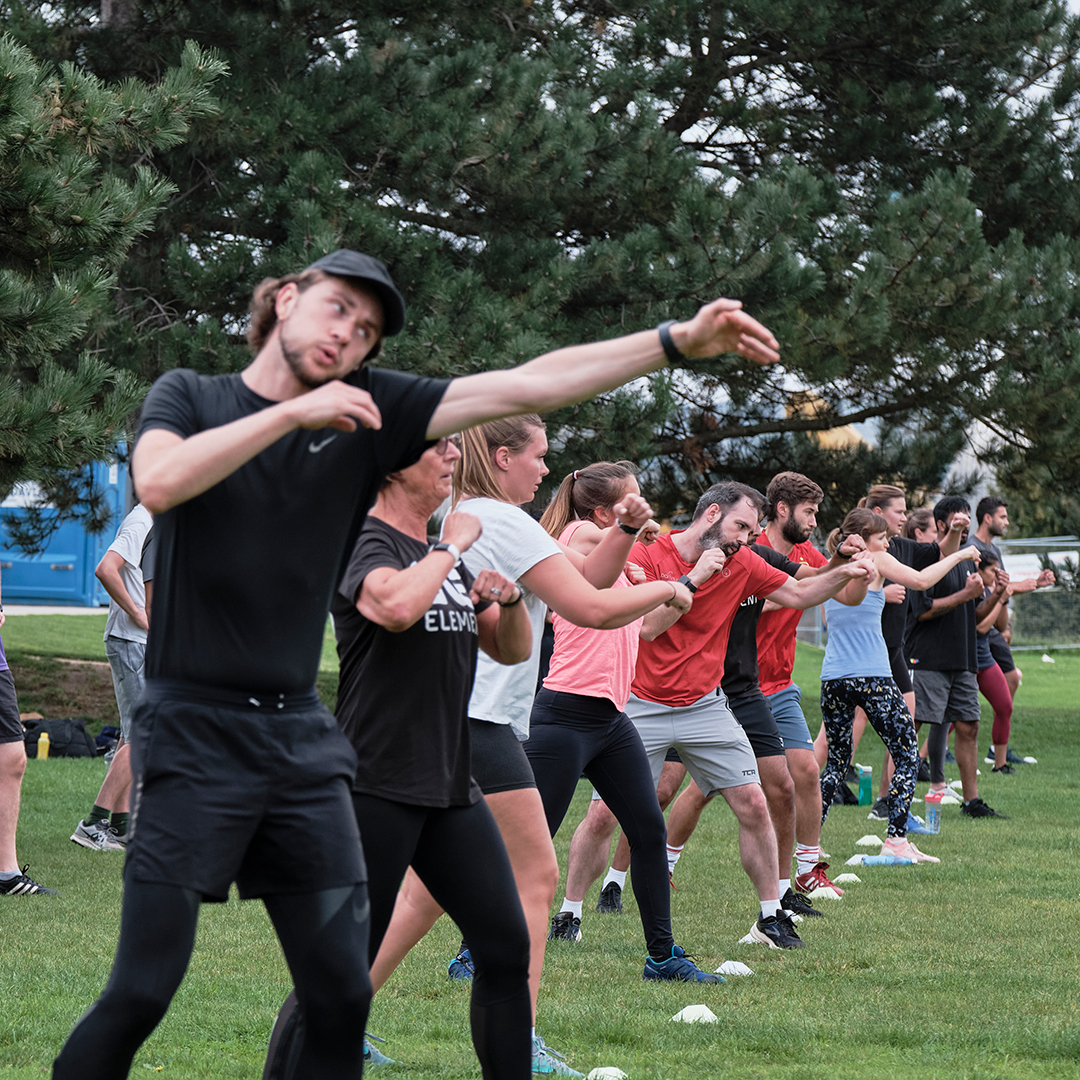
Survival Through Cooperation
The evolution of traits favouring cooperation is evident in the development of communication systems and language. The ability to share information, coordinate actions, and transmit knowledge across generations has been a cornerstone of human progress. Language itself is a testament to the power of cooperation, as it allowed early humans to form communities that were better equipped to hunt, gather, and defend against predators.
Also, the development of empathy and kindness has given significant advantages to societies. Selfless behaviours, such as sharing resources and helping others, fostered strong social bonds, enhanced group solidarity, and increased the chances of group survival. These behaviours often come at a personal cost, contradicting the idea of the ‘selfish gene’.
We know this is true when we are in the park in the middle of a tough session. We work as a team to push ourselves forward to achieve individual results. We also celebrate our individual successes together, the true example of fostering relationships through group fitness.
Evolving Social Structures
Human evolution is intertwined with the evolution of social structures. From hunter-gatherer bands to complex civilisations, societies have thrived due to the cooperative efforts of individuals. The development of shared norms, values, and ethical codes has allowed humans to live in harmony and resolve conflicts without resorting to violence.
In today’s world, the importance of social interaction cannot be overstated. As individuals increasingly live in isolation, the detrimental effects of loneliness become evident. Studies link social isolation to a host of health issues, including depression, anxiety, and even cognitive decline. The yearning for connection remains deeply rooted in our ‘social gene’, compelling us to seek out meaningful relationships.
Outdoor social fitness allows us to foster relationships through group exercise. Reverting to nature and our primal instincts, reminding ourselves of the support and connection that we once offered each other in our daily lives.
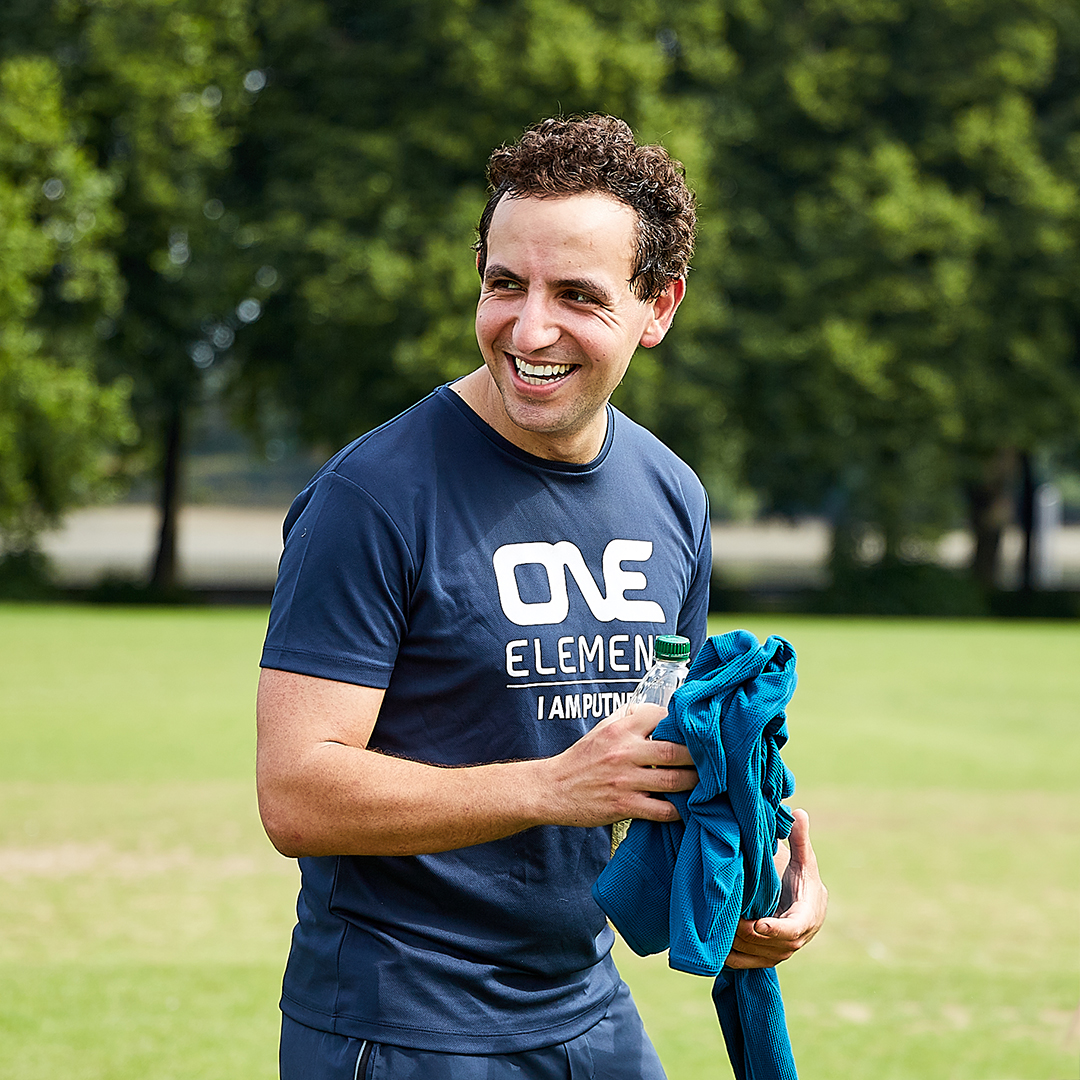
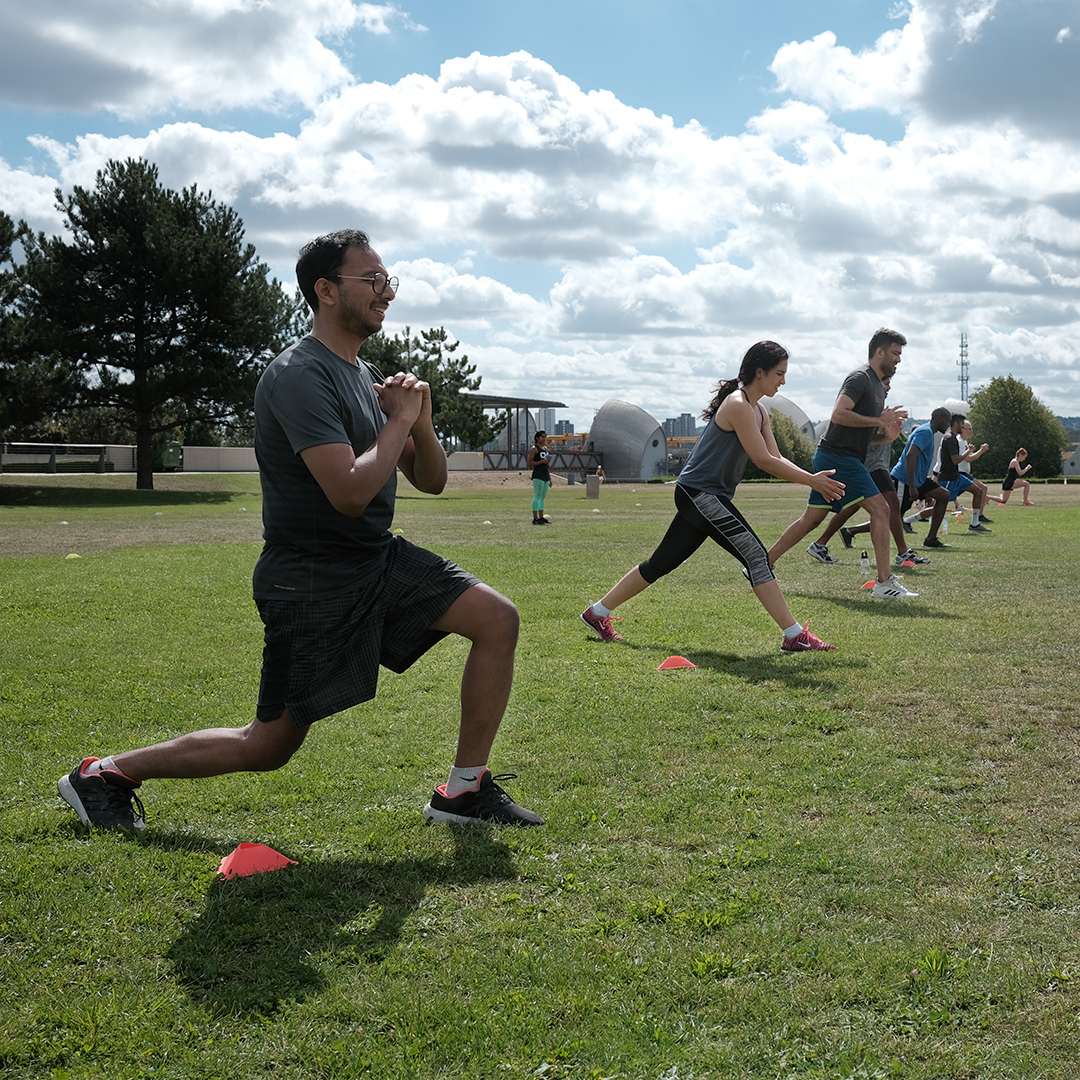
The Call for Connection
In a culture that often values individual achievements and success, we must recognize the significance of communal bonds. While personal growth is important, the collective well-being of society is equally crucial. The power of the ‘social gene’ reminds us that our strength lies in our ability to form connection, support one another, and build resilient communities.
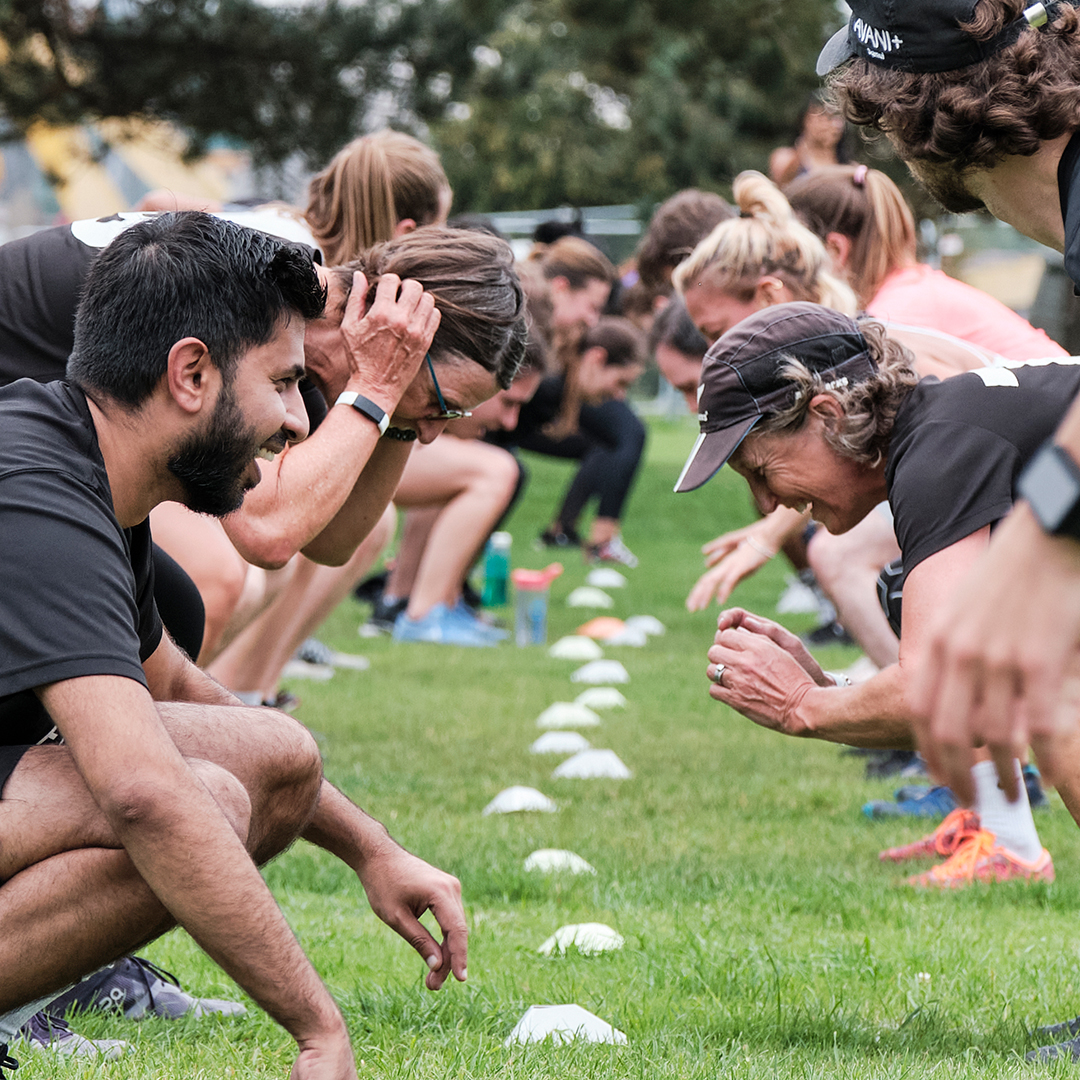
In a world that is becoming increasingly fragmented, the need for social interaction has never been greater. The digital age, while offering avenues for virtual connection, cannot replace the need for human interaction. Our evolution as a species has been defined by our ability to collaborate, share, and empathise. It’s time to listen to our ‘social gene’ and prioritise the nurturing of social groups and meaningful relationships.
At One Element, we gently guide and support individuals at our outdoor fitness sessions. We encourage everyone to interact with each other and work together as a team. We find this makes us work harder, stive for more and achieve success by fostering connections through group exercise.
Conclusion: Embracing the Social Gene
While the ‘selfish gene’ theory highlights the importance of individual survival and reproduction, it does not fully capture the intricate web of cooperation, camaraderie and our need for connection. By creating social bonds, embracing community, and valuing collective growth, we honour the legacy of the ‘social gene’ and pave the way for a more connected and harmonious future.
For those seeking to engage in group exercise, outdoor fitness, and social fitness activities, understanding the power of the ‘social gene’ becomes a source of inspiration. The shared experiences and interactions during outdoor group exercise can increase the sense of connection, fellowship, and collective well-being. In a world yearning for more meaningful relationships, One Element training and socialising offers a great way to embrace the call for connection and helps you foster relationships through group fitness.
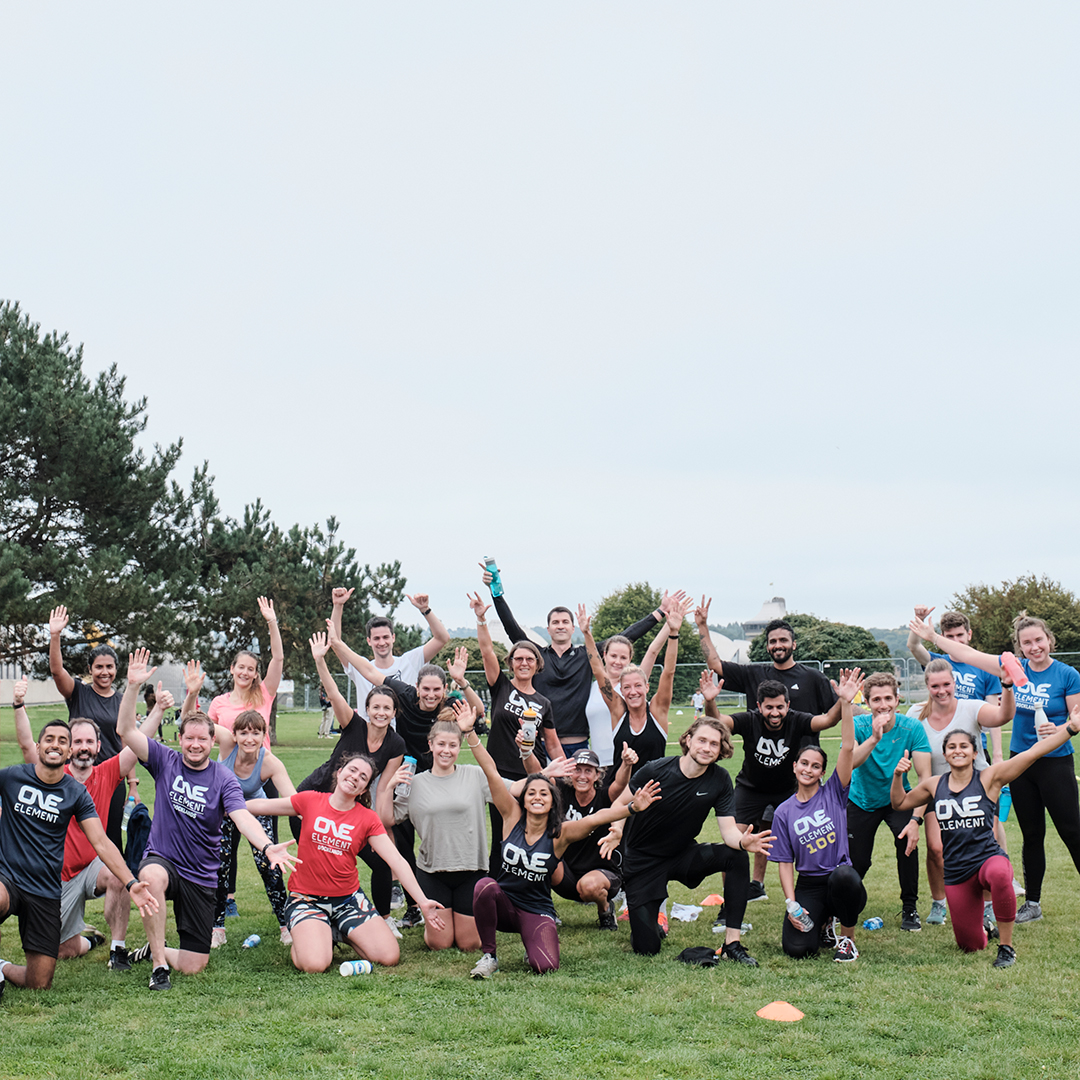
Experience the power of the Social Gene for yourself
Book your free trial with One Element and start fostering connection through group fitness today.
Experience the power of the Social Gene for yourself
Book your free trial with One Element and start fostering relationships through group fitness today.
If you’d like to learn more on this subject, there are several writers and researchers who have explored the idea of the “social gene” and the role of social behaviour and cooperation in human evolution. They delve into topics related to the evolution of human sociality, empathy, altruism and the development of complex societies. Here are a few notable authors and their works:
Richard Dawkins: As we’ve learned, Dawkins is known for popularising the concept of the ‘selfish gene’. He also touches on the role of cooperation and altruism in his book ‘The Selfish Gene’. He discusses how these behaviours can be understood within an evolutionary framework.
Frans de Waal: A primatologist and ethologist, de Waal has written extensively on the evolution of social behaviour and empathy in animals, including humans. His books like ‘The Age of Empathy’ and ‘The Bonobo and the Atheist’ explore the connections between empathy, morality and social dynamics.
Sarah Blaffer Hrdy: Hrdy’s work, such as ‘Mothers and Others: The Evolutionary Origins of Mutual Understanding’, delves into the evolutionary origins of cooperation, caregiving, and social relationships, particularly in the context of maternal care and child-rearing.
Matt Ridley: In his book ‘The Origins of Virtue: Human Instincts and the Evolution of Cooperation’, Ridley explores how cooperation and social behaviour are deeply ingrained in human nature and have contributed to our success as a species.
Robert Sapolsky: While not directly focused on the ‘social gene’, Sapolsky’s works, like ‘Behave: The Biology of Humans at Our Best and Worst’, delve into the complex interplay of biology, behaviour and societal influences in shaping our actions, including cooperation and social dynamics.
Jonathan Haidt: Haidt’s ‘The Righteous Mind: Why Good People Are Divided by Politics and Religion’ examines the evolutionary roots of morality and how it shapes our social and political behaviors.
These authors offer insights into the intricate relationship between genetics, social behaviour, and human evolution. While they may not all explicitly use the term ‘social gene’, their works delve into the fascinating interplay between our evolutionary past and the complex social behaviours we exhibit today.

